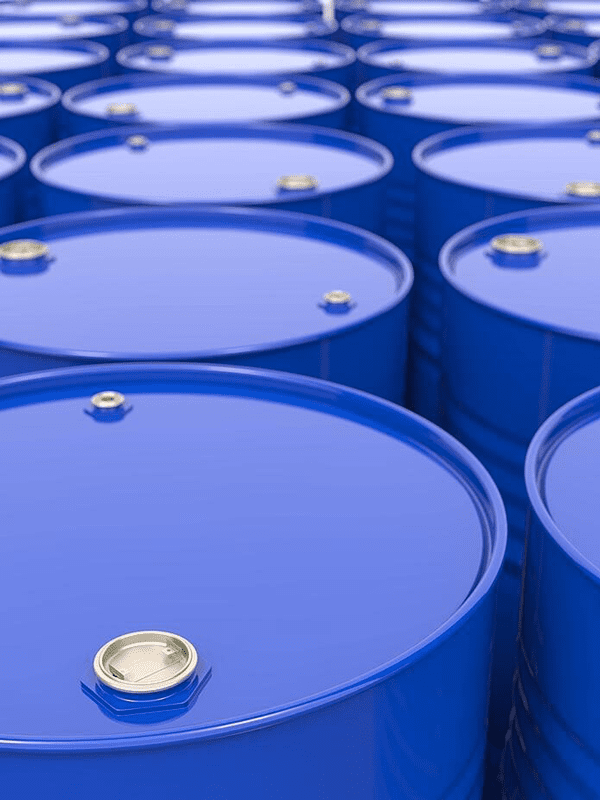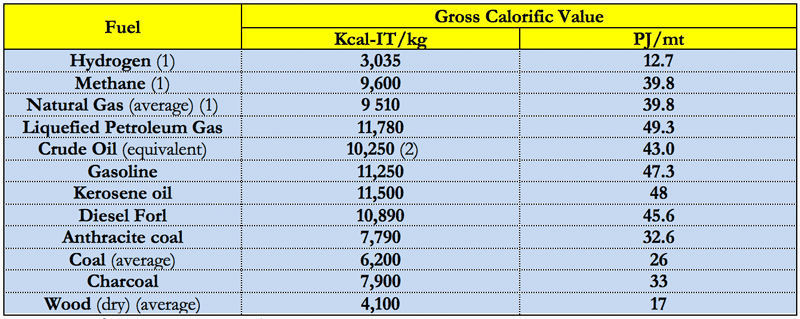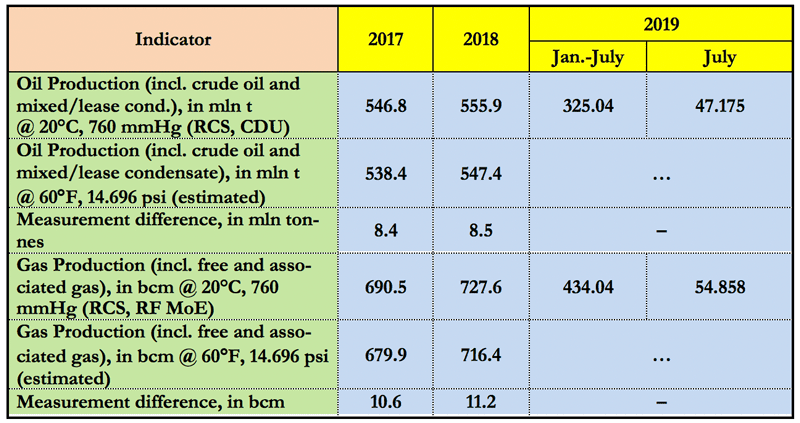History tells that in the past Standard Oil company – for the sake of distinguishing – painted barrels that were used to carry crude oil in blue color (while those for kerosene – in red). Therefore, the first letter “b” stands for “blue.” But this is  a non-grounded myth as “blue” was carried by the barrel many years well before Standard Oil was created at all. A more realistic look at the fact that the Vikings used wooden barrels to store salted herrings, which, as you know, shine blue.
a non-grounded myth as “blue” was carried by the barrel many years well before Standard Oil was created at all. A more realistic look at the fact that the Vikings used wooden barrels to store salted herrings, which, as you know, shine blue.
Actually, Richard III, King of England from 1483 until 1485, had defined the wine puncheon as a cask holding 84 gallons and a wine tierce as holding 42 gallons. By 1700 custom had made the 42 gallon watertight tierce a standard container for shipping eel, salmon, herring, molasses, wine, whale oil and many other commodities in the English colonies. After the American Revolution in 1776, American merchants continued to use the same size barrels.
Oil companies that are listed on American stock exchanges typically report their production in terms of volume and use the units of bbl, Mbbl (one thousand barrels), or MMbbl (one million barrels) and occasionally for widest comprehensive statistics the Gbbl (or sometimes Gbl) denoting a billion. There is a conflict concerning the units for oil barrels. For all other physical quantities, according to the International System of Units, the uppercase letter “M” means “mega-” (“one million”), for example: Mm (one million metres, megameters), MHz (one million hertz, or megahertz), MW (one million watts, or megawatt), MeV (one million electronvolt, or megaelectronvolt). But due to tradition, the Mbbl acronym is used in the USA today meaning “one thousand bbl,” as a heritage of the roman number “M” meaning “one thousand.” On the other hand, there are efforts to avoid this ambiguity, and most of the barrel dealers today prefer to use bbl, instead of Mbbl, mbbl, MMbbl or mmbbl.
Outside the United States, volumes of oil are usually reported in cubic metres (m3) instead of oil barrels. Cubic meter is the basic volume unit in the International System. In Canada, oil companies measure oil in cubic metres, but convert to barrels on export, since most of Canada’s oil production is exported to the USA. The nominal conversion factor is 1 cubic meter = 6.2898 oil barrels, but conversion is generally done by custody transfer meters on the border, since the volumes are specified at different temperatures, and the exact conversion factor depends on both density and temperature. Canadian companies operate internally and report to Canadian governments in cubic metres, but often convert to U.S. barrels for the benefit of American investors and oil marketers. They generally quote prices in Canadian dollars per cubic meter to other Canadian companies, but use U.S. dollars per barrel in financial reports and press statements, making it appear to the outside world that they operate in barrels.
Companies on the European stock exchanges report the mass of oil in metric tonnes. Since different varieties of petroleum have different densities, however, there is not a single conversion between mass and volume. For example, one tonne of heavy distillates might occupy a volume of 256 U.S. gallons (6.1 bbl). In contrast, one tonne of crude oil might occupy 272 gallons (6.5 bbl), and one tonne of gasoline will require 333 gallons (7.9 bbl). Overall, the conversion is usually between 6 and 8 bbl per tonne.
The measurement of an “oil barrel” originated in the early Pennsylvania oil fields. The Drake Well, the first oil well in the U.S. was drilled in Pennsylvania in 1859, and an oil boom followed in the 1860s. When oil production began, there was no standard container for oil, so oil and petroleum products were stored and transported in barrels of different shapes and sizes. Some of these barrels would originally have been used for other products, such as beer, fish, molasses or turpentine. Both the 42-U.S. gallon (159 l) barrels (based on the old English wine measure), the tierce (159 liters) and the 40-U.S. gallon (151.4 l) whiskey barrels were used. Also, 45-U.S. gallon (170 l) barrels were in common use. The 40 gallon whiskey barrel was the most common size used by early oil producers, since they were readily available at the time.
 In August 1866, at the height of the oil boom in northwestern Pennsylvania, a handful of American independent oil producers met in Titusville. One of the issues that were discussed at this meeting was the coordination of standard containers for oil supplies to consumers. As a result, a 42 gallon volume was agreed as a standard oil barrel.
In August 1866, at the height of the oil boom in northwestern Pennsylvania, a handful of American independent oil producers met in Titusville. One of the issues that were discussed at this meeting was the coordination of standard containers for oil supplies to consumers. As a result, a 42 gallon volume was agreed as a standard oil barrel.
Already by the year 1700, everyday practice in Pennsylvania and accumulated experience led to the fact that the sealed wooden barrel of 42 gallons became the de facto standard container for transporting fish, molasses, soap, wine, oil, whale oil and other goods.
Barrels with a capacity of 42 gallons when filling them with oil had just such a weight that one healthy person could handle. One person could not cope with larger barrels, and the use of smaller barrels was not so economically advantageous. In addition, 20 barrels with a capacity of 42 gallons were ideally placed on typical, at that time, barges and railway platforms.
Thus, choosing a 42 gallon barrel as an industry standard was a logical and natural step for early oil producers. In 1872, the American Petroleum Association officially approved a 42 gallon barrel as a standard.
Currently, oil, of course, is no longer transported in any barrels. It is transported by tankers and oil pipelines. But the oil barrel as a unit of measure remained in the practice of world oil trade.
Then why is the abbreviation
“bbl” used to refer to a barrel? Why are there two letters “b” in the barrel designation (bbl), although the English word barrel has only one “b?”
Popular rumor says that such an abbreviation owes its origin to the phrase blue barrel. The fact is that in the early practice of Standard Oil, it was to paint its oil barrels in blue. The blue barrel was a kind of guarantee that its volume is 42 gallons.
But upon careful reading, you may notice the use of the abbreviation “bbl” in Sally Brig Ship Cargo Declaration dated September 11, 1764.
There are other hypotheses about the origin of the abbreviation “bbl.” For example, some believe that bbl was used to indicate the plural. That is, one barrel is 1 bl, two barrels is 2 bbl, etc. Others believe that the abbreviation “bbl” was used to mean the word “barrel” so as not to confuse it with the word “bale.” That is, 1 bl is one bale, and 1 bbl is one barrel.
In general, the truth is somewhere nearby. But what is a real truth there, it is no longer to find out. However, as it was mentioned above, the “viking” hypothesis seems the most realistic.
Around 1866, early oil producers in Pennsylvania came to the conclusion that shipping oil in a variety of different containers was causing buyer distrust. They decided they needed a standard unit of measure to convince buyers that they were getting a fair volume for their money, and settled on the standard wine tierce, which was two gallons larger than the standard whisky barrel. The Weekly Register, an Oil City, Pennsylvania newspaper, stated on August 31, 1866 that “the oil producers have issued the following circular:”
Whereas, it is conceded by all producers of crude petroleum on Oil Creek that the present system of selling crude oil by the barrel, without regard to the size, is injurious to the oil trade, alike to the buyer and seller, as buyers, with an ordinary sized barrel cannot compete with those with large ones. We, therefore, mutually agree and bind ourselves that from this date we will sell no crude by the barrel or package, but by the gallon only. An allowance of two gallons will be made on the gauge of each and every 40 gallons in favor of the buyer.
And by that means King Richard III’s English wine tierce became the American standard oil barrel.
By 1872, the standard oil barrel was firmly established as 42-U.S. gallons. The 42 gallon standard oil barrel was officially adopted by the Petroleum Producers Association in 1872 and by the U.S. Geological Survey and the U.S. Bureau of Mines in 1882.
In modern times, many different types of oil, chemicals, and other products are transported in steel drums. In the United States, these commonly have a capacity of 55-U.S. gallons (208 l) and are referred to as such. They are called 210-litre or 200 kg drums outside the United States. In the United Kingdom and its former dependencies, a 44-imperial-gallon (200 l) drum is used, even though all those countries now officially use the metric system and the drums are filled to 200 liters. Thus, the 42-U.S. gallon oil barrel is a unit of measure, and is no longer a physical container used to transport crude oil, as most petroleum is moved in pipelines or oil tankers. In the United States, the 42-U.S. gallon size of barrel as a unit of measure is largely confined to the oil industry, while different sizes of barrel are used in other industries.
The abbreviations “Mbbl” and “MMbbl” refer to one thousand and one million barrels respectively. These are derived from the Latin “mille,” meaning “thousand.” This is different from the SI convention where “M” stands for the Greek “mega,” meaning “million.” Outside of the oil industry, the unit Mbbl (megabarrel) can sometimes stand for one million barrels. Some sources assert that “bbl” originated as a symbol for “blue barrels” delivered by Standard Oil in its early days. However, while Ida Tarbell’s 1904 Standard Oil history acknowledged that the abbreviation “bbl” had been in use well before the 1859 birth of the U.S. petroleum industry.
Oil wells recover not just oil from the ground, but also natural gas and water. The term BLPD (Barrels of Liquids per Day) refers to the total volume of liquid that is recovered. Similarly, barrels of oil equivalent or BOE is a value that accounts for both oil and natural gas while ignoring any water that is recovered.
Other terms are used when discussing only oil. These terms can refer to either the production of crude oil at an oil well, the conversion of crude oil to other products at an oil refinery, or the overall consumption of oil by a region or country. One common term is barrels per day (BPD, BOPD, bbl/d, bpd, bd, or b/d), where 1 BPD is equivalent to 0.0292 gallons per minute. One BPD also becomes 49.8 tonnes per year. At an oil refinery, production is sometimes reported as barrels per calendar day (b/cd or bcd), which is total production in a year divided by the days in that year. Likewise, barrels per stream day (BSD or BPSD) is the quantity of oil product produced by a single refining unit during continuous operation for 24 hours.
When used to denote a volume, 1 bbl is exactly equivalent to 42-U.S. gallons and is easily converted to any other unit of volume. A volume of 1 bbl is exactly equivalent to a volume of 158.987294928 liters.
In the oil industry, following the definition of the American Petroleum Institute, a standard barrel of oil is often taken to mean the amount of oil that at a standard pressure (14.696 psi) and temperature (60°F) would occupy a volume of exactly 1 bbl. This standard barrel of oil will occupy a different volume at different pressures and temperatures. A standard barrel in this context is thus not simply a measure of volume, but of volume under specific conditions. The task of converting this standard barrel of oil to a standard cubic meter of oil is complicated by the fact that the standard cubic meter is defined by the American Petroleum Institute to mean the amount of oil that at 101.325 kPa and 15°C occupies 1 cubic meter. The fact that the conditions are not exactly the same means that an exact conversion is impossible unless the exact expansion coefficient of the crude is known, and this will vary from one crude oil to another.
Thus, for a light oil with an API gravity of 35, warming the oil from 15°C to 60°F (which is 15.56 °C) might increase its volume by about 0.047 percent. Conversely, a heavy oil with an API gravity of 20 might only increase in volume by 0.039 percent. If physically measuring, the density at a new temperature is not possible, and then tables of empirical data can be used to accurately predict the change in density. In turn, this allows maximum accuracy when converting between standard bbl and standard m3.
International commodity exchanges will often set an arbitrary conversion factor for benchmark crude oils for financial accounting purposes. For instance, the conversion factor set by the NYMEX (New York Mercantile Exchange) for WCS (Western Canadian Select) crude oil traded at Hardisty, Alberta, Canada is 6.29287 U.S. barrels per cubic meter, despite the fact that crude oil cannot be measured to that degree of accuracy. Regulatory authorities in producing countries set standards for measurement accuracy of produced hydrocarbons, where such measurements affect taxes or royalties to the government. In the United Kingdom, for instance, the measurement accuracy required is ±0.25 percent.
A barrel can technically be used to specify any volume. Since the actual nature of the fluids being measured varies along the stream, sometimes qualifiers are used to clarify what is being specified. In the oilfield, it is often important to differentiate between rates of production of fluids, which may be a mix of oil and water, and rates of production of the oil itself. If a well is producing 10 mbd of fluids with a 20 percent water cut, then the well would also be said to be producing 8,000 barrels of oil a day (bod).
In other circumstances, it can be important to include gas in production and consumption figures. Normally, gas amount is measured in standard cubic feet or cubic metres for volume (as well as in kg or Btu, which don’t depend on pressure or temperature). But when necessary, such volume is converted to a volume of oil of equivalent enthalpy of combustion. Production and consumption using this analogue is stated in boed (barrels of oil equivalent per day).
In the case of water-injection wells, in the United States it is common to refer to the injectivity rate in bwd (barrels of water per day). In Canada, it is measured in cubic metres per day (m3/d). In general, water injection rates will be stated in the same units as oil production rates, since the usual objective is to replace the volume of oil produced with a similar volume of water to maintain reservoir pressure.
Thus, a 42 gallon barrel, which accommodates 158.987294928 liters, became a standard unit for measuring oil in the States in 1866.
A boe or BOE (barrel of oil equivalent) – is often used in the USA for energy comparisons and combinations. This is a unit of energy based on the approximate energy released by burning one barrel (42-U.S. gallons or 158.9873 litres) of crude oil. The BOE is used by oil and gas companies in their financial statements as a way of combining oil and natural gas reserves and production into a single measure, although this energy equivalence does not take into account the lower financial value of energy in the form of gas.
The U.S. IRS defines higher heating value (HHV) of the boe as equal to 5.8 million BTU (5.8×106 BTU59°F equals 6.1178632×109 J, about 6.1 GJ or about 1.7 MWh.) The value is necessarily approximate as various grades of oil and gas have slightly different heating values. If one considers the lower heating value instead of the higher heating value, the value for one boe would be approximately 5.4 GJ. Typically, 5,800 cubic feet of natural gas or 58 CCF (100 cubic feet) are equivalent to one boe. The USGS gives a figure of 6,000 cubic feet (170 cubic meters) of typical natural gas.
Over the northern border, in Canada, Europe and Russia officially uses the IEA (International Energy Agency) as well as in the PRC a similar but larger energy unit is used for these purposes and energy balances – the toe or TOE (ton of oil equivalent). In particular, toe is used by the Canadian ministry of energy – NEB (National Energy Board) – and Canadian leading energy companies. NCV of this energy unit is defined as 41.868 gigajoules (GJ) or 10 gigacalories (Gcal). Net calorific value (NCV) is defined, by convention, as follows:
- 1 toe = 11.63 megawatt-hours (MWh);
- 1 toe = 41.868 gigajoules (GJ);
- 1 toe = 10 gigacalories (Gcal) – using the international steam table calorie (calIT) and not the thermochemical calorie (calth);
- 1 toe = 39,683,207.2 British thermal units (BTU);
- 1 toe = 1.42857143 tonnes of coal equivalent (tce).
At the same time, in Russia and the FSU other countries, the tce is widely used for energy comparisons. This energy unit is usually called tonne of standard reference fuel (trf), net calorific value of which is defined as 29.3 GJ or 7,000 kcal. In this case it equals 0.7 toe and is assumingly referred to energy contents of various fuels in the following way (Table 1):

In its turn, in Australian energy industry PJ (petajoules) are very popular and 1 PJ equals 1015 joules. In detail:
- 1 PJ = 947,817,077,749.15 BTU
- 1 PJ = 2.3890295761862E+14 calories 15°C (cal15)
- 1 PJ = 2.3900573613767E+14 calories [thermochemical] (calth)
- 1 PJ = 947,816.08955725 dekatherms (dath)
- 1 PJ ≈ 277.77777777778 gigawatt hours (GWh)
- 1 PJ = 23,884.58966275 tonnes of oil equivalent (TOE)
Here, in Australia, PJs are used even in the gas industry (Table 2).

Also, in Australian energy industry, quite popular is coe (crude oil equivalent), which is sometimes understood as a synonym of oil equivalent. But in Australia this has a special meaning and its GCV is officially defined as 10,250 Kcal15/kg or 18,500 btu/ft3.
As prices, production, consumption and trade of natural gas (including LNG) worldwide are often presented in MMBtu and dekatherms, 1 MMBtu = 1,055,055,852.62 Joules and 1 dth = 10 therms or 1,000,000 British thermal units (MMBtu) or ≈ 1.055 GJ ≈ 1,000 cubic feet (cf) or one Mcf (of natural gas measured at standard conditions, since one cubic foot of dry natural gas has a high heating value (HHV) of approximately 1,000 Btu).
To measure and present large and very large amounts of energy Quads and Q units are used in the States. In particular, Quad is used by the U.S. Department of Energy in discussing world and national energy budgets and is equal to 1015 (quadrillion) BTU, or 1.055 × 1018 joules (1.055 exajoules or EJ) in SI units, which is an approximate equivalent of the following:
- 8,007,000,000 gallons (US) of gasoline
- 293,071,000,000 kilowatt-hours (kWh)
- 293.07 terawatt-hours (TWh)
- 33.434 gigawatt-years (GWy)
- 36,000,000 tonnes of coal
- 970,434,000,000 cubic feet of natural gas
- 5,996,000,000 UK gallons of diesel oil
- 25,200,000 tonnes of crude oil (the USA)
- 252,000,000 tonnes of trinitrotoluene (TNT) or five times the energy of the Tsar Bomba nuclear test
- energy of 15,750 nuclear explosions, each of which was in theory produced by the A-bomb thrown on Hirosima on August 6, 1945
- 13.3 tonnes of uranium-235
In its turn, the Q energy unit is equal to 1018 (quintillion, trillion) BTU or 1.0E+18 BTU.
Just to feel this better by putting the Quad and Q units into a frame of actual reference, we say that in 2019 inland consumption of petroleum and other HC liquids is projected in the U.S. Energy Information Administration of the Energy Department (EIA USDoE)’s Reference Scenario of its Annual Energy Outlook (January 2019) at over 38 Quads while global primary energy consumption is forecast by the EIA to grow by 2040 up to 0.82 Q from some 0.52 Q in 2010.
It is noteworthy that each of the above energy units is used at certain national measurement conditions which are called the standard temperature and pressure (or, shortly, STP). This is very important to know since national STPs vary noticeably country-by-country. It is well known that, if all other things being equal (or in Latin “ceteris paribus”), the volume is directly proportional to temperature and inversely proportional to pressure, which are applied to it. Or, in other words, under constant temperature and pressure, the relationship between the volume of gas and the number of moles is direct. This law is known as Avogadro’s Principle or Avogadro’s hypothesis. This hypothesis was first published by Amedeo Carlo Avogadro (1776–1856), an Italian scientist, in the year 1811.
Just for those who prefer a mathematical language, we refer to Avogadro’s original and simple modified equations:
V ÷ n = k, which means that the volume amount fraction will always be the same value if the pressure and temperature remain constant.
Let V1 and n1 be a volume amount pair of data at the commencement of our research. If the amount is transformed to a different value called n2, then the volume will b altered to V2.
As we are aware that V1 ÷ n1 = k and we are acquainted with: V2 ÷ n2 = k
Meanwhile as k = k, we can determine that V1 ÷ n1 = V2 ÷ n2.
This equation of V1 ÷ n1 = V2 ÷ n2 will be very useful in cracking Avogadro’s Law problems. Here is the Law articulated in fractional form:

And if we emphasize that the temperature should be presented in kelvins (and Celsius degrees) and the pressure – in Pascals (how all the units are accepted in modern chemistry and physics, as well as in the SI, where 0 K = –273.15°C and 1 Pa = 1 Newton/m2 = 0.00014503773 Psi), then the needed equation looks as follows:
Vx = Vo × (273.15 + Tn) ÷ Po x Pn, where
Vx – a new, sought-for volume,
Vo – an original volume in the same units,
Tn – a new temperature in Celsius degrees,
Po – an original pressure,
Pn – a new pressure in the same units.
Although the Avogadro’s Law relates to an ideal gas (an abstract, theoretical gas composed of many randomly moving point particles whose only interactions are perfectly elastic collision), the above equation is actually good (universal) for any gaseous or liquid hydrocarbons.
The USA currently uses STP correspond to 60°F (288.706 K, 15.556°C) and 14.696 psia (1 atm, 1.01325 bar, also named “1 Standard Atmosphere”). At these conditions, the volume of 1 mole of a gas equals 23.6442 liters while 1 cubic foot of a gas does not equal 28.3168 liters (under any similar measurements) but 28.8719 liters (in line with the definition of the STP, used by the International Gas Union (IGU) (15°C and 760 mmHg). The above mentioned set of volume measurements, known as U.S. STP, is officially used by the national oil and gas and energy business (and, first of all, by the API, DoE, PRMS, SPE and USGS).
In Canada, Europe, Australia, and Latin America, for example, the STP conditions used by the ISO (International Organization for Standardization) (that are 15°C and 101.325 kPa) have been adopted, as a rule, and are used as the base values for defining the standard cubic meter.
In its turn, in Russia, 20°C and 760 mmHg, corresponding, in particular, to the U.S. NIST’s NTP and EPA’s STP, are officially used for volume measurements. As the matter of fact, this is almost the biggest difference in temperatures used at present in the oil and gas industry worldwide (20°C and 60°F)2. At the Russian conditions, 1 U.S. cubic foot of a gas does not equal 28.3168 liters but nearly 28.7527 liters or contains almost 1.54 percent more gas, while U.S. oil 42 gallon barrel is not equal to 158.987295 liters but accommodates over 161.4345 liters of oil (again by nearly 1.54 percent more) (Figure 1).

Surely, not a big deal, of course. But, if taken in absolute physical terms, with gas production standing now in Russia at some 730 bcm a year and that of crude oil and mixed/leased condensate at over 560 mta, this is more than what was actually produced last year in Vietnam (9.6 bcma or 0.93
bcfd) or Peru (6.4 mta or 154 kb/d) (Table 3).

2 To be exact, an even larger difference should be attributed to volumes (of natural gas) exported by Russia to the EU (almost 1.74 percent).
Eugene M. Khartukov is a professor at the Moscow State Institute/University for International Relations, (MGIMO), head of the Moscow-based Center for Petroleum Business Studies (CPBS) and of the World Energy Analyses and Forecasting Group (GAPMER), and vice president (for Eurasia) of the Geneva-based Petro-Logistics S.A. He is the author and co-author of over 360 scientific publications and speaker at more than 170 international oil, gas, energy or economic fora. Email: khartukov@gmail.com.




